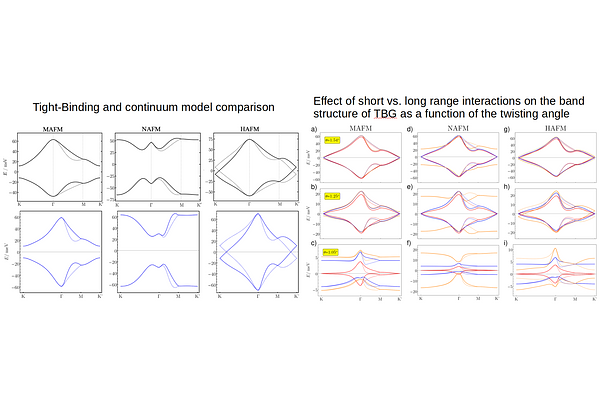Short vs. long range exchange interactions in twisted bilayer graphene

Short vs. long range exchange interactions in twisted bilayer graphene
Alejandro Jimeno-Pozo, Zachary A. H. Goodwin, Pierre A. Pantaleón, Valerio Vitale, Lennart Klebl, Dante M. Kennes, Arash Mostofi, Johannes Lischner, Francisco Guinea
AbstractWe discuss the effect of long-range interactions within the self-consistent Hartree-Fock (HF) approximation in comparison to short-range atomic Hubbard interactions on the band structure of twisted bilayer graphene (TBG) at charge neutrality for various twist angles. Starting from atomistic calculations, we determine the quasi-particle band structure of TBG with Hubbard interactions for various magnetic orderings: modulated anti-ferromagnetic (MAFM), nodal anti-ferromagnetic (NAFM) and hexagonal anti-ferromagnetic (HAFM). Then, we develop an approach to incorporate these magnetic orderings along with the HF potential in the continuum approximation. Away from the magic angle, we observe a drastic effect of the magnetic order on the band structure of TBG compared to the influence of the HF potential. Near the magic angle, however, the HF potential seems to play a major role on the band structure compared to the magnetic order. These findings suggest that the spin-valley degenerate broken symmetry state often found in HF calculations of charge neutral TBG near the magic angle should favour magnetic order, since the atomistic Hubbard interaction will break this symmetry in favour of spin polarization.